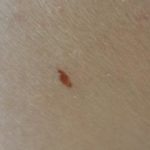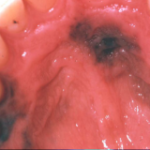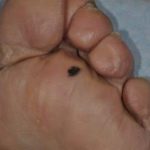April 13, 2017 | Stephen Fine, Founder and President
Acral Lentiginous Melanoma
One of the most important tasks we face in helping to spread melanoma awareness and education, is to relieve people of the notion that the disease only impacts Caucasians and other pale-toned ethnicities. That’s simply not true. Melanoma is a color-blind, unbiased menace to people of all ethnic backgrounds. With that in mind, the focus of today’s topic will be Acral Lentiginous Melanoma (ALM).
ALM is a symptom-free branch of melanoma that is most common in blacks, Hispanics and Asians; but also affects whites and other light-skinned races. (Two related forms of ALM are Subungual Melanoma and Mucosal Melanoma. The former develops underneath finger and toenails, while the latter presents on mucous membranes). Interestingly, unlike most other melanomas, the onset of ALM is not connected to exposure to the sun’s harmful UV (ultraviolet) rays.
Where does Acral Lentiginous Melanoma Develop?
ALM originates mostly on the palms of our hands, the soles of our feet or, as mentioned earlier, beneath our nails. In words, its appearance is best described by the following direct quote from the Cleveland Clinic’s cited source article linked below:
“Clinically, the lesion is characterized by a tan, brown-to-black, flat macule with color variegation and irregular borders.”
To literally illustrate that statement, please view these photos of ALM and Mucosal Melanoma :



Please note that “Fingernail/Toenail Melanoma” is often mistaken for a minor injury; such as what may occur while participating in athletics, or accidentally hitting your thumb with a hammer. It may also be mistaken for a nail fungus. None of these marks should be disregarded; particularly if you don’t recall incurring an injury or fungus.
One vital thing that ALM does have in common with the more typical melanomas is that it, too, can be easily cured if it’s caught soon enough. If it’s allowed to remain untreated, it will eventually turn fatal.
So please remember, when performing your monthly skin cancer self-examination, be sure to check the bottoms of your feet. As well as between all fingers and toes.
*Additional source articles: Clevelandclinicmeded.com, MSNewsNow.com
